Discover Kenya's Best Beaches for Kiteboarding


Intro
Kenya’s coast is not just a stretch of sand; it’s a vibrant tapestry woven with the threads of culture, adrenaline, and stunning vistas. Merely stepping on the beaches, you can already sense the pulse of adventure that draws kiteboarders from across the globe.
From the well-trodden shores of Diani Beach to the lesser-known charms of Watamu, each beach offers its own unique spin on the kiteboarding experience. With favorable winds, warm waters, and beautiful landscapes, these coastal areas become a playground for both beginners and seasoned pros alike.
The natural beauty here is no mere backdrop. It’s a living, breathing ecosystem, rich with marine life and local traditions that enrich each kiteboarding adventure. This guide aims to navigate through crucial elements to maximize your experience—from essential gear to advanced techniques, all while keeping safety at the forefront. With the right preparation and knowledge, you'll be well on your way to enjoying everything Kenya's kiteboarding scene has to offer.
Intro to Kenya's Coastal Landscape
Kenya's coastal landscape presents a unique blend of natural beauty and cultural richness that has become a beacon for adventure enthusiasts and kiteboarding aficionados. The serene stretches of sandy beaches, crystal-clear waters, and consistent winds together create an ideal backdrop for thrilling water sports. When delving into this topic, it's imperative to underscore not only the geographical attributes but also the historical significance that shapes these coastal treasures. By examining what contributes to the allure of Kenya's coastline, readers can gain a clearer perspective of its value as a kiteboarding paradise.
Overview of Kenya's Geography
Kenya's coastline hugs the Indian Ocean for about 540 kilometers, boasting diverse environments ranging from vivid coral reefs to lush mangroves. The geography here plays a crucial role in both recreational activities and ecological preservation. The most noteworthy areas include popular destinations such as Diani, Watamu and Lamu, each possessing unique wind and wave patterns favorable for kiteboarding.
- Diani Beach: Known for its soft white sands and lively atmosphere, it offers consistent winds from southeast, the perfect conditions for kiteboarding.
- Watamu: Celebrated for its striking coral reefs, it also has areas with more challenging conditions, attracting both novice and experienced kiteboarders.
- Lamu: A touch of the exotic, this island provides a more laid-back vibe along with expansive waters perfect for exploring diverse kiteboarding techniques.
The intricate ecological systems alongside these beaches not only support vibrant marine life but also contribute to the overall kiteboarding experience. When these natural forces harmonize, they create waters that are not just playgrounds but also realms of exploration and adventure.
Historical Context of Kenyan Beaches
To appreciate Kenya's beaches in their current state, one must venture into their storied past. Historically, the Kenyan coast has been a crossroads of cultures, influenced by centuries of trade and interactions between the Swahili, Arabs, and Portuguese. This melting pot of civilizations has left an indelible mark on local traditions and lifestyles.
These historical currents resonate in present-day coastal life, reflected in the architecture, culinary practices, and the vibrant marketplaces that scent the air with spices and ocean breezes. The introduction of tourism in the late 20th century added another layer to this narrative, transforming many beaches into thriving hubs catering to international visitors.
This evolution resulted in increased interest in water sports, particularly kiteboarding, which leveraged the natural offerings of Kenya's coast. Understanding this historical connection allows kiteboarders and outdoor enthusiasts to appreciate not just the physical landscape, but the cultural contexts that shape their experiences today. It serves as a reminder that the wind and tides they ride have also carried stories and traditions for generations.
"The Kenyan coast isn't merely a series of beaches; it's a tapestry woven with history, culture, and nature's finest offerings. Understanding this context deepens the kiteboarding experience."
This thread of history, combined with the fascinating geography, ensures that Kenya stands out on the global kiteboarding map. As visitors gear up and get ready to harness the winds, they do so in a place rich in both challenge and charm.
Notable Beaches for Kiteboarding
When it comes to kiteboarding, selecting the right spot is crucial for a fulfilling experience. Notable beaches for kiteboarding in Kenya are not just about stunning views; they serve up the perfect conditions for both novices and seasoned pros alike. These locations present unique features that create an environment fit for flying high above the waves, making them essential to any kiteboarder’s itinerary.
Diani Beach: A Kiteboarding Haven
Wind Conditions and Best Seasons
Diani Beach boasts some of the most favorable wind conditions in Kenya. Generally, the winds blow consistently from June to September and again from December to March, making these months ideal for kiteboarding. The wind here creates a thrilling experience, as the breeze typically ranges from 15 to 25 knots. This steady airflow allows kiteboarders to maximize their time on the water, whether they're working on tricks or simply enjoying the ride.
Another advantage of Diani Beach is its gentle waves. While some kiteboarding spots are best known for their challenging conditions, the more moderate waves here are suitable for all levels. This aspect, combined with the warm tropical waters, makes it a sought-after destination. However, one must be cautious of occasional gusts, which can catch even the most experienced kiteboarders off guard.
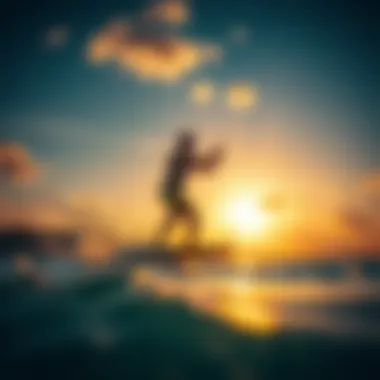
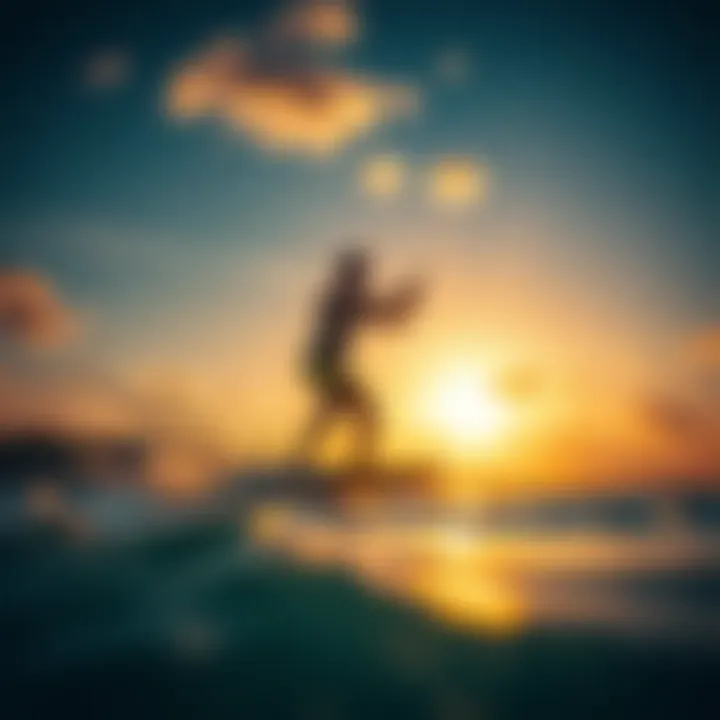
Local Kiteboarding Schools
Diani Beach has several reputable kiteboarding schools, making it an excellent choice for those looking to learn or refine their skills. These schools cater to various skill levels, offering lessons from the basics to advanced tricks. The instructors are often seasoned kiteboarders themselves, sharing not only expert knowledge but also valuable local insights that enhance the learning experience.
Many of the local schools provide equipment rental services, which means that newcomers don't need to shell out a fortune buying gear before even trying the sport. Additionally, the vibrant community around these schools creates a welcoming atmosphere for visitors. However, one must be sure to check the credentials of the schools, as quality can vary. Still, getting a lesson can be a gateway to meeting like-minded individuals and possibly even forming long-lasting friendships.
Kite Beach in Watamu
Wave Quality and Terrain
Kite Beach, located in Watamu, is known for its pristine conditions tailored for advanced kiteboarders. Unlike Diani, Watamu has waves that can get quite challenging, making it a thrilling site for those looking to push their limits. The beach terrain here varies, with sandy areas complemented by rocky outcrops, offering a more dynamic experience.
The wave quality here is often rated high, with consistent breaks that come from a variety of wind directions. This versatility allows for exploration of different riding styles and conditions. However, it creates challenges for less experienced kiteboarders, as the surf can become quite robust.
Accessing Gear Rentals
When it comes to sourcing gear, Watamu does not fall short. Numerous providers offer a range of rental options that cater to varying skill levels. This accessibility to quality equipment is a real boon for travelers who may not wish to bring their own gear.
Furthermore, rental shops often provide the latest equipment, ensuring riders can take advantage of the latest technological advancements in kiteboarding. On the flip side, securing the right size and type of equipment can sometimes be a challenge during peak seasons, as demand tends to outpace supply.
Lamu Island: A Unique Experience
Cultural Significance
Lamu Island offers a kiteboarding experience peppered with rich cultural heritage. This UNESCO World Heritage site not only provides breathtaking scenery but also invites kiteboarders to engage with local history. The island's unique Swahili culture depicts a blend of Arab, African, and Persian influences, which can be seen in architecture, art, and local traditions. Visitors often find themselves connecting with the vibrant culture, enhancing their overall adventure.
Kiteboarding in Lamu not only serves as a thrilling activity but also as a unique lens through which to explore the community. Local festivals and events often coincide with the kiteboarding season, providing ample opportunities for kiteboarders to immerse themselves in the local way of life.
Remote Kiteboarding Locations
While Lamu is known for its cultural richness, it also harbors some lesser-known kiteboarding spots that provide solitude and tranquility. These remote locations often offer pristine conditions and a stark contrast to the busier sites. Here, kiteboarders can enjoy the thrill of the sport while surrounded by the island's natural beauty, far removed from crowds.
The secret to these hidden gems lies in their accessibility. Some might require traditional wooden dhows to reach; therefore, an adventurous spirit is needed. Nonetheless, for those willing to take the plunge, the rewards are manifold. The tranquility and untouched nature of these locales create an unforgettable kiteboarding experience that resonates with adventurers seeking more than just sports.
Ecological and Environmental Significance
The ecological and environmental significance of Kenya's coastal regions extends far beyond their stunning beauty and appeal to adventurers. As kiteboarders zoom over the surface of the aquamarine waters, it's essential to recognize the intricate ecosystems that support both marine life and the livelihoods of local communities. This segment highlights the vital connections between kiteboarding, environmental sustainability, and conservation efforts that may influence the future of these cherished beaches.
Coral Reefs and Marine Life
Coral reefs are often referred to as the rainforests of the sea, teeming with biodiversity that plays an essential role in the marine ecosystem. In Kenya, the coral reefs are not only a feast for the eyes but also serve as critical habitats for a myriad of fish species and other marine organisms. These reefs act like nature's shield, protecting shorelines from erosion while providing essential resources for local fishermen and communities.
Kiteboarders may find themselves gliding over a palette of coral formations. The reefs around Diani Beach and Watamu are perfect examples of vibrant ecosystems that attract kiteboarding enthusiasts. The colors of the coral are mesmerizing, but it’s not just about looks: they also provide a nursery for young fish, preparing them for the open waters. Researchers have shown that healthy coral reefs enhance the local fisheries, ensuring that fish populations remain robust, which is crucial for sustaining local economies. Notably, marine species including parrotfish, clownfish, and sea turtles can often be spotted while kiteboarding, offering a unique experience that combines sport with nature appreciation.
Preserving these ecosystems involves awareness and action.
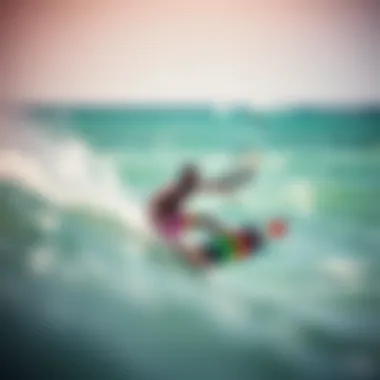
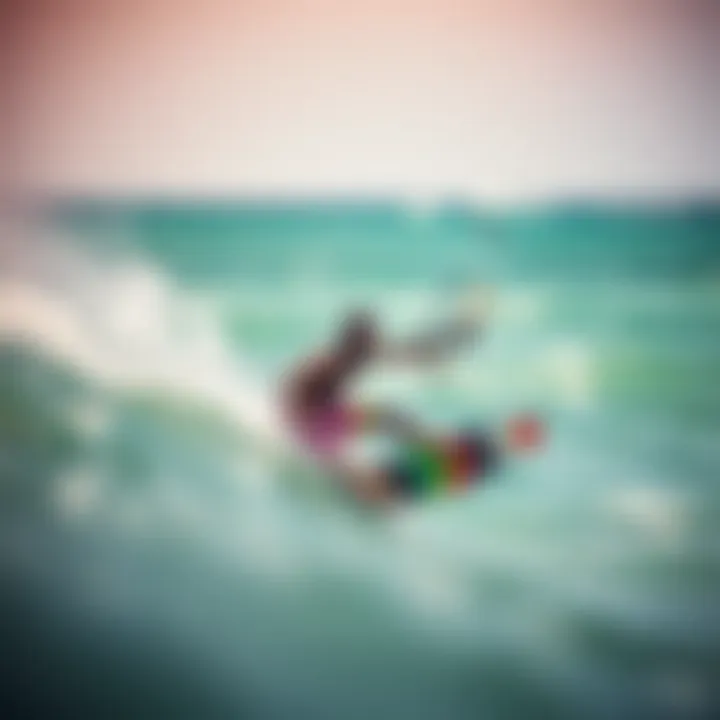
- Educate yourself and others: Understanding the importance of coral reefs fosters respect and encourages protective measures.
- Participate in local conservation initiatives: Join community projects aimed at preserving marine habitats.
- Promote eco-friendly practices: As a kiteboarder, avoid damaging reef areas and adhere to guidelines that protect marine ecosystems.
Conservation Efforts in Coastal Areas
Across the Kenyan coast, conservation efforts have become pivotal in addressing environmental challenges that threaten marine habitats. Organizations work tirelessly, striving to combat issues such as coral bleaching, fishing over-exploitation, and pollution. These initiatives create avenues for curious kiteboarders to engage with the environment while enjoying their sport.
Key organizations such as Kenya Marine and Fisheries Research Institute and Wildlife Conservation Society focus on promoting sustainable practices within local communities. They advocate for educational outreach programs, offering resources that inform residents and visitors alike about the delicate balance between tourism and ecological preservation.
Cultural Insights of Coastal Communities
The coastal communities of Kenya, with their vibrant traditions and rich heritage, offer valuable insights into the lives of those who call the shoreline home. These insights are not just colorful tales; they reflect the unique relationship between the local populace and their environment, underpinning their way of life and community bonds. As kiteboarders explore the diverse beaches of Kenya, understanding these cultural aspects deepens their respect for the local people, enhances their appreciation of the places they visit, and ultimately contributes to more responsible tourism.
Local Traditions and Practices
Each coastal region in Kenya boasts its own distinct traditions and practices, often passed down through generations. For instance, the Swahili culture, predominant along the coast, is characterized by its unique language, cuisine, and music. The blend of African, Arab, and Portuguese influences reflects a historical tapestry woven through trade and interaction. Witnessing or even participating in local events, such as the famous Lamu Cultural Festival, allows visitors to experience traditional dances, crafts, and culinary delights. This kind of engagement offers kiteboarders more than just thrill; it connects them to the rich heritage of the community.
In many coastal villages, communal fishing remains a cornerstone of daily life. Fishermen, often working together, embody unity and collaboration, values that resonate with the kiteboarding community. Observing these practices fosters respect and understanding, reminding visitors that the sport they love thrives in a setting that depends on harmony with nature and local customs.
Influence of Tourism on Local Culture
As tourism grows, so too does its imprint on local cultures. While it brings much-needed economic benefits, it can also pose challenges to the authenticity of local traditions. In some areas, the influx of tourists has led to the rise of commercial enterprises that cater to visitors while diluting cultural practices. Resorts and restaurants aiming at western tastes may overshadow traditional eateries and artisans.
However, there is a flip side. Tourists motivated by adventure and curiosity are often keen on experiencing authentic local cultures, leading to a resurgence of interest among the youth in preserving their ancestral traditions. Many young individuals now offer guided tours that incorporate traditional stories, music, and crafts, striking a balance between modernization and preservation.
Engaging with the local culture is essential for kiteboarders. It ensures that they enjoy a rich experience and helps protect the traditions of the coastal communities. A respectful approach to tourism can contribute to sustainability and may even inspire kiteboarders to become advocates for these cultures. As the sport becomes more popular, understanding and appreciating the local context is integral to ensuring its legacy along the pristine Kenyan shores.
"Engaging with the local culture is a bridge to mutual respect and conservation, allowing kiteboarders to take home more than just thrill but a connection with the land and its people."
Practical Considerations for Kiteboarders
When it comes to kiteboarding in Kenya, it's essential to factor in practical considerations that directly impact the safety and enjoyment of the sport. These aspects not only enhance the kiteboarding experience but also ensure that participants respect and preserve the stunning coastal environment that attracts them in the first place. From safety guidelines to gear recommendations, knowing the ropes can make all the difference between a memorable adventure and a hasty retreat.
Safety Guidelines for Kiteboarding
Safety is no laughing matter, especially when you're riding the winds above the azure waters. Understanding safety guidelines can prevent mishaps and elevate the thrill of kiteboarding. It begins with recognizing the local regulations.
Local Regulations
Local regulations in coastal areas of Kenya are not just bureaucratic red tape; they serve a crucial role in ensuring both safety and the sustainable use of the ocean. These laws can cover everything from designated kiteboarding zones to local wildlife protections. The key characteristic of these regulations is that they vary greatly depending on specific beaches.
For instance, some beaches may require kiteboarders to maintain a certain distance from swimmers and fishermen, shielding both the sport and local livelihoods. Another important rule might involve restrictions on the number of kiteboarders in a particular zone at any given time to minimize environmental impact. Such regulations ensure that everyone can enjoy the water safely and keep the local ecosystem thriving.
However, one downside to these regulations can be the relatively limited areas available for kiteboarding, potentially causing frustration for some enthusiasts eager to explore. Nonetheless, adhering to these guidelines is not just about compliance; it’s about preserving the pristine beauty of the location and keeping those good vibes flowing among the community.
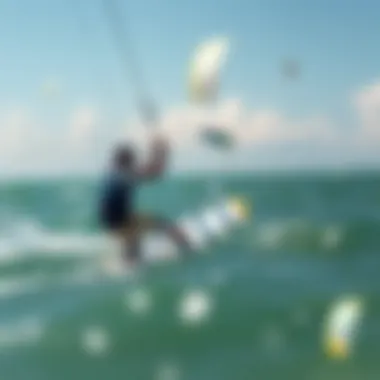
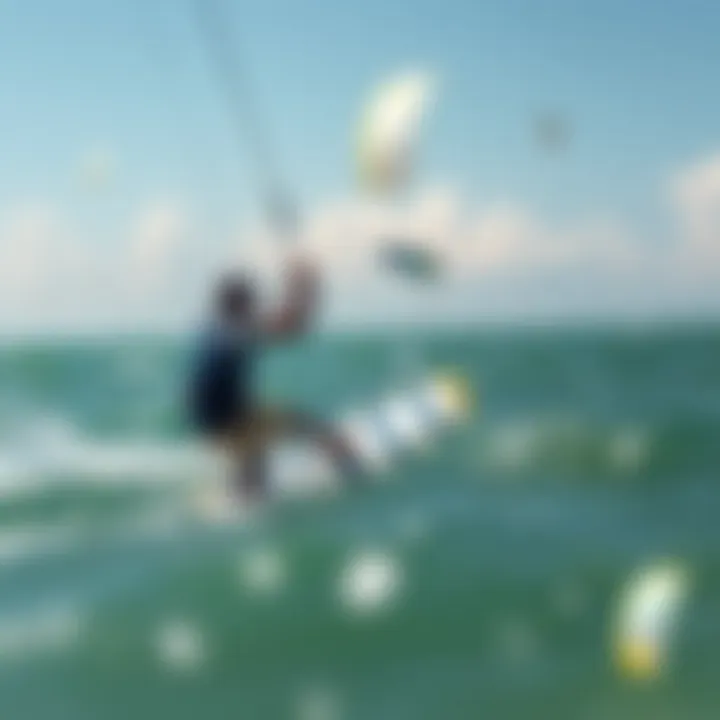
Environmental Awareness
In tandem with knowing the rules is cultivating environmental awareness. This characteristic involves understanding how one's actions impact the marine ecosystem, especially in fragile coastal environments. Kiteboarders, as outdoor enthusiasts, have a unique bond with nature that can inspire responsible behavior. This awareness enhances the overall kiteboarding experience, as it connects the thrill of the ride with a sense of stewardship for the environment.
A striking feature of promoting environmental awareness is the practice of leaving no trace. By being mindful of litter and avoiding interactions with wildlife, kiteboarders can enjoy their sport without causing harm. This not only respects the local culture but also enhances the reputation of kiteboarding as an eco-friendly sport.
The downside might be the need for abstaining from certain areas, particularly during sensitive ecological seasons, yet these practices ultimately enrich the experience for everyone involved.
Gear Recommendations
Considering appropriate gear is crucial for any kiteboarding adventure, particularly in Kenya with its unique wind and water conditions. The right equipment can empower a kiteboarder to ride the waves with confidence and ease.
Best Equipment for Local Conditions
When discussing the best equipment for local conditions, a keen awareness of the variations in wind strength and wave size is vital. Standard recommendations often include a versatile kite, which may perform excellently in both light and heavy wind conditions.
For instance, a 9m to 12m kite might be ideal for most kiteboarders enjoying the steady winds along Kenya’s coasts. The beauty of this choice lies in its adaptability. This equipment isn’t just beneficial; it is essential for ensuring an enjoyable experience on the water.
Another hallmark of the local equipment is the usage of twin-tip boards, offering excellent control for different skill levels. A downside, however, could be the additional costs associated with high-quality gear, but the investment generally translates to better experiences and increased safety on the water.
Where to Rent or Buy Gear
For those who travel often or are hesitant to invest in personal equipment, knowing where to rent or buy gear is indispensable. Many local shops along the popular kiteboarding beaches provide rental services for kites, boards, and safety gear. Options like Diani Beach and Watamu have well-established rental facilities that cater to both beginners and seasoned kiteboarders.
The benefit of renting gear in these areas is access to products tailored for local conditions. These shops typically ensure that the equipment is in top shape, saving users from any technical headaches that can detract from the adventure.
However, it is crucial to consider potential downsides, such as availability during peak seasons or variable pricing structures. Still, for those looking to test the waters without a long-term commitment, rentals prove to be a practical choice, allowing ample freedom to explore.
Equipped with this knowledge, kiteboarders can embark on their Kenyan escapade with the confidence that they’re not just prepared, but respected members of a vibrant kiteboarding community.
Culmination: The Future of Kiteboarding in Kenya
Kiteboarding in Kenya stands at a fascinating juncture, one that intertwines adventure with environmental stewardship. As the sport continues to grow in popularity, it raises important questions about sustainability, community impact, and the future of Kenya's pristine coastlines. The significance of these factors cannot be understated.
Sustainable Practices and Kiteboarding
Sustainability is paramount in today's sporting world, particularly when it concerns ecosystems as delicate as those found along Kenya's coastline. Many local kiteboarders and instructors are already incorporating eco-friendly practices. Stripping down operations to their bare essentials can greatly minimize the environmental impact—this means using equipment made from sustainable materials and adhering to best practices that respect marine life. Implementing beach clean-up campaigns can unite the kiteboarding community while preserving the natural beauty of the beaches.
- Select eco-friendly gear: Consider brands that prioritize sustainability in their operations.
- Promote awareness: Share tips on social media about how to keep our waters clean.
- Join local initiatives: Participate in coastal conservation projects that support marine ecosystems.
By fostering a culture of respect for the environment in kiteboarding circles, enthusiasts can contribute to protecting the environment while enjoying their sport. The winds of change are here—adapting kiteboarding to harmonize with nature will be essential for its longevity in Kenya.
Potential for Growth in the Sport
The horizon looks bright for kiteboarding in Kenya, largely due to a blend of increasing interest from tourists and a growing local community of practitioners. Several factors contribute to this optimism. First, the geographical features of Kenya, such as its steady winds and numerous beaches, provide perfect conditions for both beginner and advanced kiteboarders. Moreover, with the rise of social media and travel blogs, showcasing these idyllic beaches to a wider audience, it’s conceivable that kiteboarding may become one of the top adventure sports in the region.
Moreover, increased investment in infrastructure, such as rental shops and thousands of trained instructors, could lead to a boost in attractive kiteboarding clinics. These would not only draw tourists but also create a greater local appreciation and participation in the sport.
"As kiteboarding evolves, so too must our commitment to nurturing both the sport and the environments that support it."
As kiteboarding enthusiasts collaborate with local communities and stakeholders, we may see new initiatives that not only promote the sport but also safeguard Kenya's rich environmental heritage.



